 The first of four magnitudes is said to have the same ratio to the second, which the third has to the fourth, when any equimultiples whatsoever of the first and third being taken, and any equimultiples whatsoever of the second and fourth ; if the multiple... The first of four magnitudes is said to have the same ratio to the second, which the third has to the fourth, when any equimultiples whatsoever of the first and third being taken, and any equimultiples whatsoever of the second and fourth ; if the multiple...  Euclidian Geometry - Page 157by Francis Cuthbertson - 1874 - 349 pagesFull view Euclidian Geometry - Page 157by Francis Cuthbertson - 1874 - 349 pagesFull view - About this book
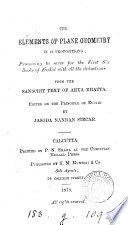 | Āryabhaṭa - 1878 - 100 pages
...two magnitudes of the same kind to one another, in respect of quantity, is called their ratio. XXX. The first of four magnitudes is said to have the same ratio to the second, which the third has to the fouitl', when any equimultiples whatsoever of the first and third i being taken, ai;d any equimultiples... | |
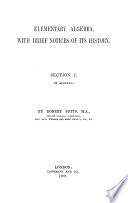 | Robert Potts - Algebra - 1879 - 672 pages
...VII., def. 20. Hence it follows that a, b, c, d are proportionals by Eue. V., def. 5, ' namely : — | The first of four magnitudes is said to have the same...the second, which the third has to the fourth, when any equimultiples whatsoever of the first and third being taken, and any equimultiples whatsoever of... | |
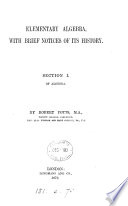 | Robert Potts - 1879 - 668 pages
...Eue. Vu., def. 20. Hence it follows that a, b, c, d are proportionals by Eue. V., def. 5, namely : — The first of four magnitudes is said to have the same...the second, which the third has to the fourth, when any equimultiples whatsoever of the first and third being taken, and any equimultiples whatsoever of... | |
 | University of Oxford - Greek language - 1879 - 414 pages
...rectilineal figures. Explain homologous, alternando, ex sequali. When is the first of four magnitudes said to have the same ratio to the second which the third has to the fourth ? 7. In a right angled triangle, if a perpendicular be drawn from the right angle to the base, the... | |
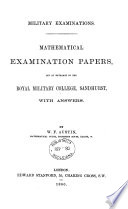 | Sandhurst roy. military coll - 1880 - 68 pages
...triangle, pentagon, and hexagon. 7. Give Euclid's definition of ratio. When is the first of four magnitudes said to have the same ratio to the second which the third has to the fourth ? 8. The sides about the equal angles of equiangular triangles are proportional. If a straight line... | |
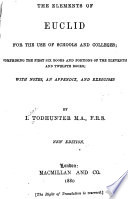 | Isaac Todhunter - Euclid's Elements - 1880 - 426 pages
...together. [V. Definition 5. Wherefore, if any number &c. Q.EJ>. PROPOSITION 13. THEOREM. If the first have the same ratio to the second which the third has to the fourth, but the third to the fourth a greater ratio than the fifth to the si.cth, thefirst shall have to ths... | |
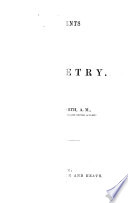 | George Albert Wentworth - Geometry, Modern - 1881 - 266 pages
...a ± ? a : b ± ?-b : : a : b. Ч 1 QED 272. DEP. Euclid's test of a proportion is as follows : — "The first of four magnitudes is said to have the...the second which the third has to the fourth, when any equimultiples whatsoever of the first and third being taken, and any equimultiples whatsoever of... | |
 | Euclides - Euclid's Elements - 1881 - 236 pages
...they cannot be said to be of the same kind, and so cannot have any ratio to each other. T. The Brst of four magnitudes is said to have the same ratio...the second, which the third has to the fourth, when any equimultiples whatsoever of the first and third being taken, and any equimultiples . whatsoever... | |
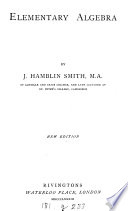 | James Hamblin Smith - 1883 - 466 pages
...representing the ratios must be equal. Euclid's test is given in Book v. Def. 5, where it stands thus : \ " The first of four magnitudes is said to have the same...the second which the third has to the fourth, when any equimultiples whatsoever of the first and third being taken and any equimultiples whatsoever of... | |
 | George Albert Wentworth - Geometry, Modern - 1882 - 268 pages
...17 QED 272. DBF. Euclid's test of a proportion is as follows :-•" The first of four magnitudes iä said to have the same ratio to the second which the third has to the fourth, when any equimultiples whatsoever of the first and third being taken, and any equimultiples whatsoever of... | |
| |